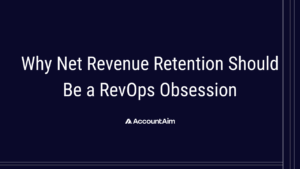In the world of Revenue Operations (RevOps), data is king. Teams rely on accurate, comprehensive data to make strategic decisions that drive growth, improve customer retention, and optimize sales processes. However, many RevOps leaders struggle with CRM limitations, particularly in historical data tracking. Salesforce and HubSpot, thw two most popular CRM platforms, have several constraints that hinder RevOps teams from leveraging data effectively.
Why Historical CRM Data Tracking Matters
Historical CRM data tracking allows RevOps teams to monitor changes over time in various data fields. This capability is crucial for several reasons:
Customer Journey Insights
Understanding how customer data evolves helps teams map out the customer journey. By tracking changes in lead status, engagement levels, and interactions, RevOps can identify patterns that lead to conversions. This allows teams to optimize the sales funnel effectively.
Retention and Renewal Analysis
Historical data on customer interactions and product usage highlights trends that predict retention or churn. By correlating these trends with renewal and expansion activities, RevOps can develop strategies to improve retention and upsell opportunities.
Sales Performance Monitoring
Tracking sales activities, opportunity stages, and pipeline changes enables RevOps to analyze the effectiveness of sales strategies. Teams can then make informed, data-driven adjustments.
Additional Use Cases
Historical CRM data tracking also benefits RevOps in:
- Marketing Attribution: Tracking changes in lead sources, campaign engagement, and conversion rates over time improves attribution models.
- Compliance and Audit Trails: Maintaining an audit trail of customer data changes ensures compliance and supports quality data governance.
Salesforce’s Limitations in Historical CRM Data Tracking
While Salesforce is a powerful CRM, its historical field tracking features are limited. These constraints pose challenges for RevOps teams:
- Limited Field Tracking: Salesforce restricts historical reporting to 20 fields per object. Teams can only track a subset of data, leaving many changes unmonitored.
- No Tracking for Long Text and Formula Fields: Salesforce does not track changes to long text or formula fields, which can result in lost insights.
- Complex Reporting Requirements: Building comprehensive reports that layer data from multiple objects requires custom reporting or Excel exports, which are time-consuming and error-prone.
- Limited Granular Access: Salesforce reporting lacks granular, interactive access to historical data, making custom queries and visualizations difficult.
HubSpot’s Limitations in Historical CRM Data Tracking
HubSpot, while user-friendly, also has notable limitations in historical data tracking:
- Lack of Field History Tracking: HubSpot does not natively track changes for all fields. Standard fields, like lifecycle stage changes, are tracked, but custom fields are not.
- No Granular Historical Reporting: HubSpot’s tools lack the depth needed to analyze field changes over time, limiting insights.
- Custom Field Limitations: Companies relying on custom properties face blind spots in understanding customer and deal progression.
- Static Reporting: HubSpot focuses on point-in-time data rather than trends, preventing teams from identifying patterns or conducting longitudinal analysis.
Data Warehousing as a Solution
Data warehousing, such as using Snowflake, is one way to overcome CRM limitations. Centralizing and storing historical data enables teams to analyze changes over time with flexibility. Setting this up involves:
- Data Integration: Sync Salesforce data into Snowflake using ETL tools to capture all changes.
- Snapshotting: Take daily or periodic snapshots to track historical changes across fields.
- Query Building: Use SQL or BI tools to create custom queries and reports that reveal trends.
Challenges with Data Warehousing
However, this approach has drawbacks:
- Access and Expertise: RevOps teams often lack access to data warehouses or the skills to use them effectively.
- Resource Constraints: Data teams manage multiple priorities, delaying RevOps’ projects.
- Disconnects: Misalignment between RevOps’ needs and how data teams structure information creates bottlenecks.
- Cost and Headcount: Maintaining data warehouses requires significant investment in technology and specialized personnel.
While data warehousing addresses some CRM limitations, it’s not always practical for RevOps teams seeking quick, actionable insights.
How AccountAim Solves These Challenges
AccountAim was built to address these challenges and empower RevOps teams with comprehensive data visibility. Here’s how it helps:
- Enhanced Historical Field Tracking: AccountAim tracks all fields, including long text and formula fields, offering a complete data history.
- No-Code Reporting: RevOps leaders can create granular, interactive reports without needing technical expertise.
- Direct Access: Unlike data warehouses, AccountAim gives RevOps teams immediate access to historical data, reducing delays.
- Cost-Effective: AccountAim eliminates the need for large data teams or complex infrastructure, making it a budget-friendly solution.
With AccountAim, RevOps teams can focus on driving strategic growth without navigating technical roadblocks.
By unlocking the full potential of historical data, AccountAim is making RevOps the hero of every organization.
Request a demo to learn more.







